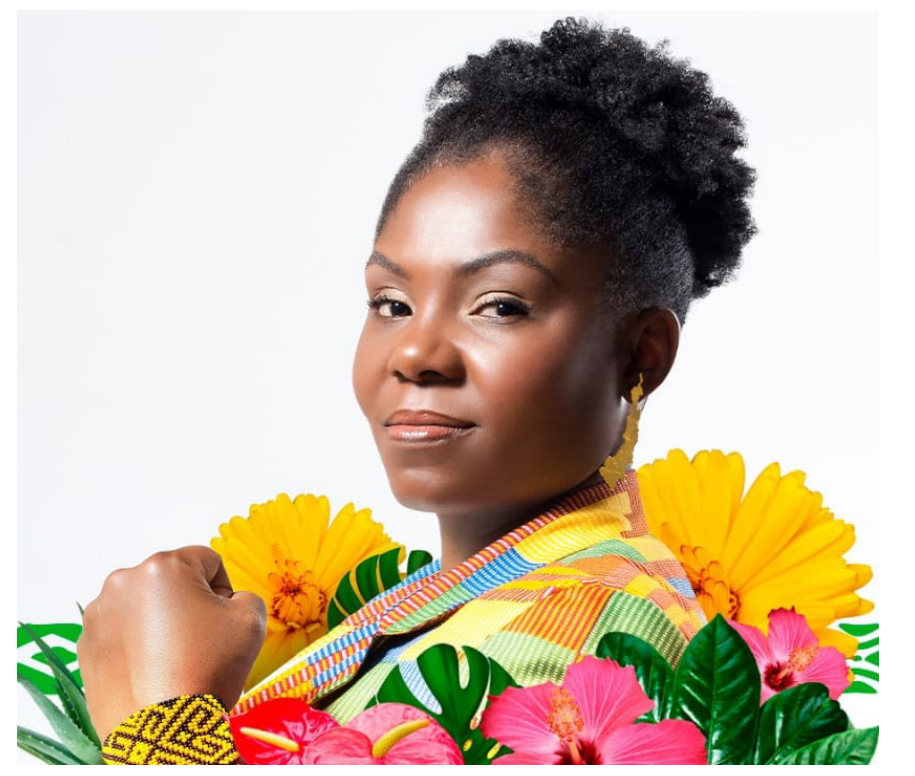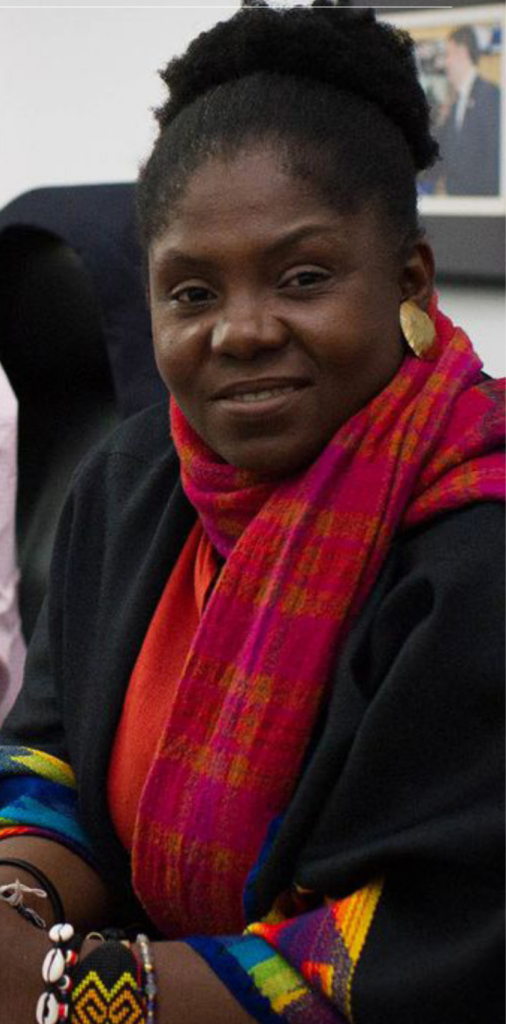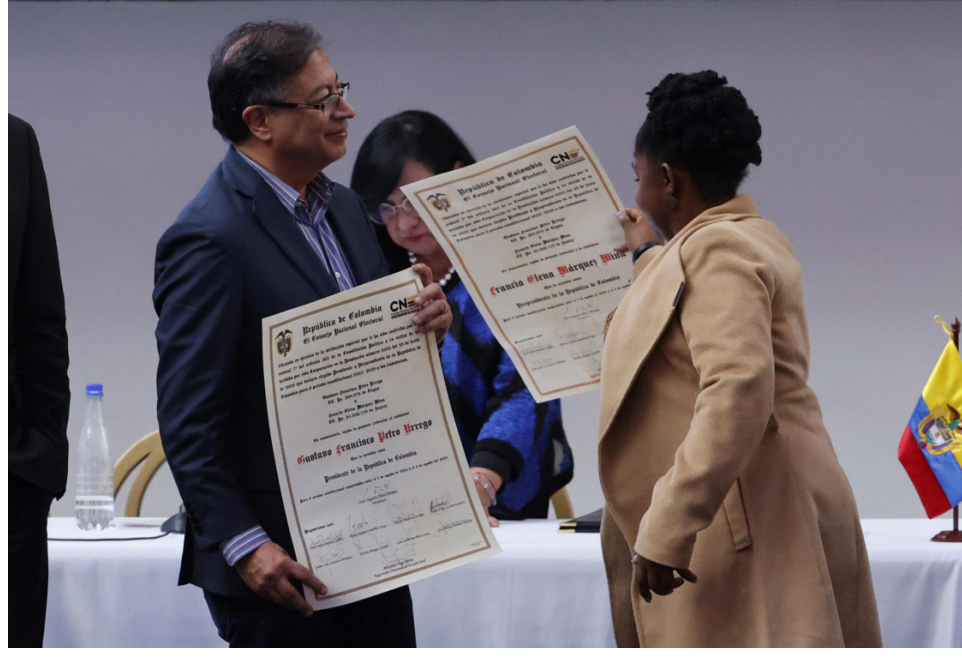Colombia made history, when it decided who its next president would be.
Colombia’s presidential election is usually won by conservative and rich politicians. Those time around, Gustavo Petro, a leftist guerilla leader came out on top, defeating Rodolfo Hernández Suárez, a millionaire real estate mogul. This made Petro the first leftist president in the history of Colombia.
A first leftist guerilla president is one for the record books, but who grabbed the headlines is his vice president, Francia Márquez, who became the first black vice president of the country, since its inception.
Who is Francia Márquez?
Francia Elena Márquez Mina, was born on 1st December 1981, in the small Yolombó village, located in the Suarez municipality of the southwestern Cauca department. Her parents were miners, though her mother worked as a farmer and midwife.
The Cauca department is known for crime and gang-related violence, and around 80% of its population suffers from poverty. She came from a region dominated by black people, who made up only 2% of the country’s population. In general, Afro-descendants make up about 6% of Colombians, and they have been largely ignored in the country’s politics.
Márquez spent parts of her childhood with her maternal grandparents, her mother, and the rest with her paternal grandparents. She became a single mother at a very young age of 16, and was forced to flee her hometown after her life was threatened, due to her activism. While in exile, she worked as a maid and at the same time studied for her law degree. In 2020, she graduated from the University Of Santiago De Cali. Márquez is also an agricultural technician graduate, from the National Learning Service of Colombia.

Francia Márquez: The Activist
When Márquez was just 13, she took her first steps in activism. From 1994 to 1997, Márquez was part of a group that opposed the violation of the Ovejas River, which was the main source of water supply for her community. Márquez and others stood up against companies like Unión Fenosa, who planned to divert the river to the Salvajina hydroelectric dam.
Diversion of the river was not the only violation they fought against, Márquez also participated in opposing illegal mining activities by AngloGold Ashanti. This mining company began by investing in the community, by building roads, schools, and other activities that were initially welcomed. Soon after, AngloGold Ashanti, made their intention to start mining activities known to the community, and it received much opposition. This was because the consequences of mining in the community were going to pollute the Ovejas River, which thousands depended on.

In 2009, Márquez led a protest against the eviction of AfroColombians from the town of La Toma. The Colombian government had granted AngloGold Ashanti and other companies, the right to mine for gold in the community without consulting residents; a decision that forced Márquez and other members of the La Toma council to file a lawsuit.
This lawsuit, made members of the La Toma council and its residents a target of paramilitary outfits. A lot of artisan miners who were La Toma indigenes were killed by these paramilitary outfits, at the banks of the Ovejas River. The country’s constitutional court, later ruled in favour of Màrquez and the people of La Toma, putting an end to mining activities in the community.
The March to Bogotá
In 2014, after facing numerous threats from illegal mining, Márquez organized a protest march from Cauca to Bogotá, the capital of Colombia. Cauca and Bogotá, are 350 kilometers apart and the march was aimed at drawing attention to the negative environmental effects of illegal mining activities.
Márquez and 80 other Afro-Colombian women, arrived in Bogota 10 days later and began to protest. This protest came to an end 22 days later, after the Colombian government and La Toma representatives reached an agreement. To honor the agreement, government officials established the country’s first task force that deals with illegal mining.
This task force ensured illegal mining equipment was removed and by the end of 2016, all illegal mining activities were put to an end in La Toma. Success in La Toma, inspired Márquez to end illegal mining activities in other nearby communities. To appreciate her efforts, Márquez was given the Goldman Environmental Prize in 2018. Also, Marquez made BBC’s 100 women list in 2019.

The Journey to Becoming Colombia’s First Black Vice President
In April 2021, Márquez announced her intention to run for the presidency, in the 2022 presidential elections. She advocated for women, Afro-Colombians, and other Colombians that have been neglected in Colombian politics. After primary elections were conducted by her party, Márquez pulled a total of 783,160 votes, which placed her second behind Gustavo Petro.
After the primary elections, Gustavo Petro extended the olive branch and nominated Márquez as his vice president. Together, Márquez and Petro won the presidential elections, after a run-off was done since no candidate got over 50% of the total votes. Márquez was inaugurated as Colombia’s vice president on August 7th, 2022.
What Márquez’s Emergence as Vice President Means
Afro-Colombians are considered a minority in the country, leading to exclusion from decisionmaking processes in Colombia. These AfroColombians are also seen as violent people, an idea that has been present since colonial times.
A regular victim of racism, Márquez will carry the hopes of Afro-Colombians, who are underrepresented in the country. On Márquez’s agenda is, creating a new equality ministry that aims to promote women’s rights, and also provide quality education and health to the poor.
